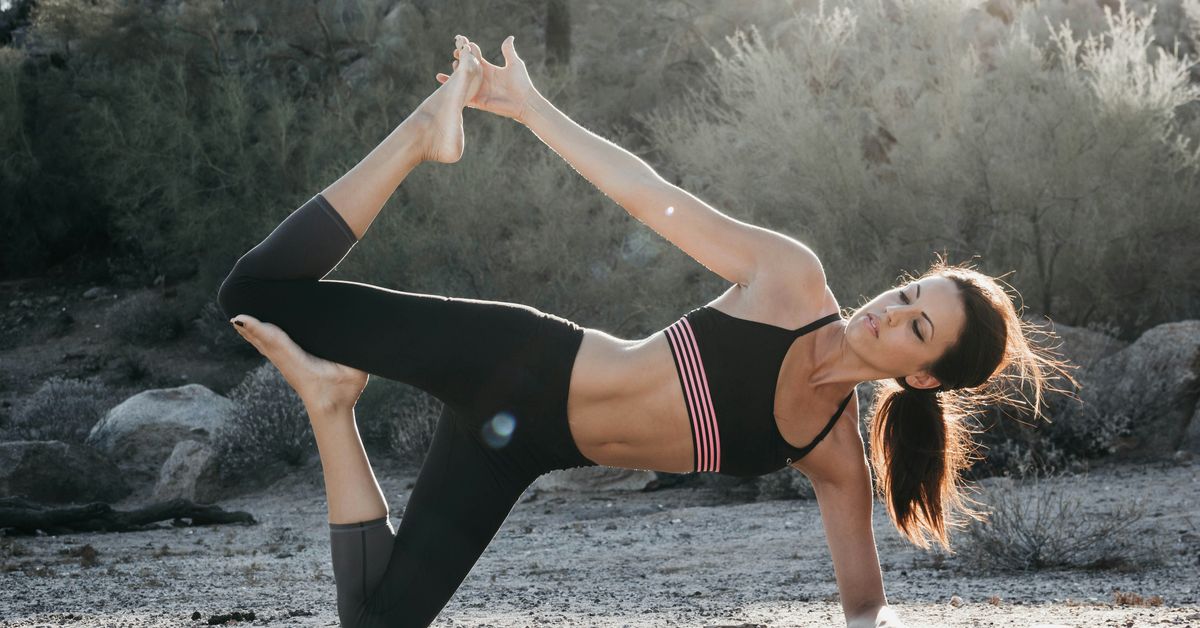Revolutionizing Your Workout Routine with Mindful Movement Techniques
When was the last time you really paid attention to your body during a workout? I mean, not just going through the motions, but genuinely tuning in to how each movement felt? In a world that’s constantly racing forward, where even our workouts can feel like another item on the to-do list, the notion of mindfulness in movement is not just refreshing—it’s revolutionary.
Mindful movement techniques are gaining traction among fitness enthusiasts, yoga practitioners, and anyone looking to break free from the monotonous grind of traditional exercise. But what exactly does this entail? How can we incorporate these techniques into our existing workout routines? More importantly, how can they enhance our physical and mental well-being? Let’s explore these questions and more.
Understanding Mindful Movement
Mindful movement is essentially about being present in your body as you move. It merges the principles of mindfulness—a mental practice focusing on the present moment—with physical activity. This approach encourages you to become aware of your body’s sensations, thoughts, and emotions while exercising. It’s about shifting from autopilot to an engaged, conscious state. I remember attending a yoga class where the instructor emphasized every breath and every stretch; it was as if I had been awakened from a long slumber. Suddenly, my body felt alive, and my mind was clear.
The Benefits of Mindful Movement
So, why should we care about mindful movement? Well, the benefits are plentiful, and they can significantly enhance your workout routine. Here are a few key advantages, which I’ve observed in both myself and others:
- Increased Body Awareness: By focusing on your movements, you develop a deeper understanding of your body’s mechanics. This can lead to improved form and reduced risk of injury.
- Enhanced Mind-Body Connection: Mindful movement fosters a stronger connection between your mind and body. This can improve your overall emotional health and resilience.
- Stress Reduction: Like meditation, mindful movement can help lower stress levels by encouraging relaxation and promoting feelings of well-being.
- Improved Performance: Many athletes report that incorporating mindfulness into their training leads to better focus, higher endurance, and improved performance.
- Joy in Movement: When you approach your workout with mindfulness, it transforms from a chore into a joyful experience. You might even find yourself looking forward to it!
Incorporating Mindful Movement Techniques
Alright, let’s get down to the nitty-gritty. How can you start integrating these mindful movement techniques into your workout routine? Here are a few practical suggestions that you can try out, and believe me, they’re easier to implement than you might think.
1. Start with Your Breath
Breath is our life force, and it plays a pivotal role in mindful movement. Before you dive into your workout, take a moment to focus on your breathing. Inhale deeply through your nose, allowing your belly to expand, then exhale fully through your mouth. Do this a few times, and you’ll likely notice that you feel more centered and ready to move. I often find that a few deep breaths can turn my workout from a mundane routine into an invigorating experience.
2. Slow Down Your Movements
This might feel counterintuitive—after all, we often equate faster movements with better workouts. However, slowing down and focusing on the quality of each movement can help you engage more deeply with your body. Whether you’re lifting weights, running, or even doing a simple stretch, aim to perform each movement deliberately. This allows you to notice how your body feels and helps prevent injuries. I sometimes catch myself rushing through reps, and when I consciously slow down, I feel the difference almost immediately.
3. Tune into Your Body’s Signals
As you work out, pay attention to how your body feels. Are you experiencing any discomfort? Is a particular exercise feeling particularly good? This awareness can help you modify your routine to better suit your body’s needs. For example, if you feel a strain in your lower back during a lift, it might be time to adjust your form or lighten the weights. Remember, no one knows your body better than you do!
4. Incorporate Visualization Techniques
Visualization is a powerful tool in sports psychology, and it can also enhance your mindful movement practice. Before starting a workout, visualize the movements you’ll be performing. Picture yourself executing each exercise with perfect form and ease. This can help set a positive intention and boost your confidence. I often find that when I visualize my workout, I’m more motivated and focused during the actual session.
5. Create a Mindful Environment
Your surroundings can greatly influence your state of mind. Try to cultivate a workout environment that encourages mindfulness. This could mean playing soft music, turning off distractions (like your phone, if possible), or simply choosing a serene space to train. I once tried an outdoor workout in a park, surrounded by the sounds of nature, and it completely shifted my perspective on exercise.
Mindful Movement Practices to Try
If you’re looking for specific mindful movement practices to incorporate, here are a few popular ones that have gained popularity:
Yoga
Yoga is perhaps the most well-known form of mindful movement. It emphasizes breath, body alignment, and awareness. Whether you’re a seasoned yogi or a complete newbie, you can benefit from the mindfulness aspect of this practice. Many find that yoga doesn’t just enhance flexibility and strength, but also instills a sense of calm and clarity.
Tai Chi
Originating from ancient Chinese martial arts, Tai Chi is often described as “meditation in motion.” It involves slow, deliberate movements combined with deep breathing. This practice not only improves balance and coordination but also encourages relaxation and mental focus. I once attended a Tai Chi class that left me feeling as though I had just floated off the ground—seriously, it was that serene.
Walking Meditation
For those who might find traditional meditation challenging, walking meditation presents a beautiful alternative. This practice involves walking slowly and mindfully, paying attention to each step and the sensations in your feet. It’s a simple yet effective way to integrate mindfulness into your daily routine. I often find myself doing this when I’m out for a walk, and it turns an ordinary stroll into a meditative experience.
Dance
Believe it or not, dancing can be a form of mindful movement! When you dance, focus on how your body feels with each sway, twist, and turn. It encourages self-expression and joy, which can be a refreshing break from more structured forms of exercise. I’ve had some of my most memorable moments dancing in my living room, completely lost in the music and my own movement. Who says workouts can’t be fun?
Challenges and Solutions
Of course, integrating mindful movement techniques into your routine is not without its challenges. You might find it difficult to stay focused, especially if you’re accustomed to a more frantic pace. Here are some common hurdles and how to overcome them:
Distractions
In our technology-driven world, distractions are everywhere. It can be tough to stay present when notifications are pinging or when your mind is racing with thoughts. To combat this, try setting aside specific times for your workouts where you can minimize interruptions. You could also designate a quiet space in your home or a local park where you can truly immerse yourself in the experience.
Impatience
Many of us are conditioned to seek instant results, especially when it comes to fitness. Mindful movement can feel slow and, at times, frustrating. Remember, this is a journey, not a sprint. Allow yourself to embrace the process and celebrate small victories along the way. I had to remind myself that progress isn’t always linear, and sometimes it’s the small changes that lead to the biggest transformations.
Skepticism
Some might roll their eyes at the concept of mindful movement, dismissing it as a trend. However, research supports the benefits of mindfulness in fitness. Studies have shown that mindfulness can improve not only physical performance but also mental well-being. If you’re skeptical, start small. Try incorporating just one mindful technique into your routine and see how it feels.
A Personal Journey
My own journey into mindful movement began unexpectedly. I was primarily a gym-goer, focused on lifting weights and hitting cardio goals. But after an injury forced me to reassess my approach, I stumbled into a yoga class on a whim. I remember the instructor’s soothing voice guiding us through each pose, the way she encouraged us to breathe deeply and feel each stretch. It was a lightbulb moment. I realized that I had been neglecting the mental aspect of my workouts.
Since then, I’ve made it a point to incorporate mindful techniques into my routine, and the results have been transformative. Not only has my physical performance improved, but I’ve also found a greater sense of peace and clarity in my day-to-day life. It’s amazing how a little mindfulness can make a substantial difference.
Conclusion
In a world that often prioritizes speed and efficiency, mindful movement techniques offer a refreshing perspective on fitness. By focusing on awareness and presence, we can transform our workouts into holistic experiences that nourish both body and mind. Whether you choose to practice yoga, Tai Chi, or simply incorporate breathwork into your routine, the key is to remain open and curious. I encourage you to give it a try—who knows, you might just find a newfound love for movement that you never knew existed.
So, the next time you hit the gym, lace up your sneakers, and take a deep breath. You’re not just there to sweat; you’re there to connect with yourself in a whole new way. And trust me, your body (and mind) will thank you.




